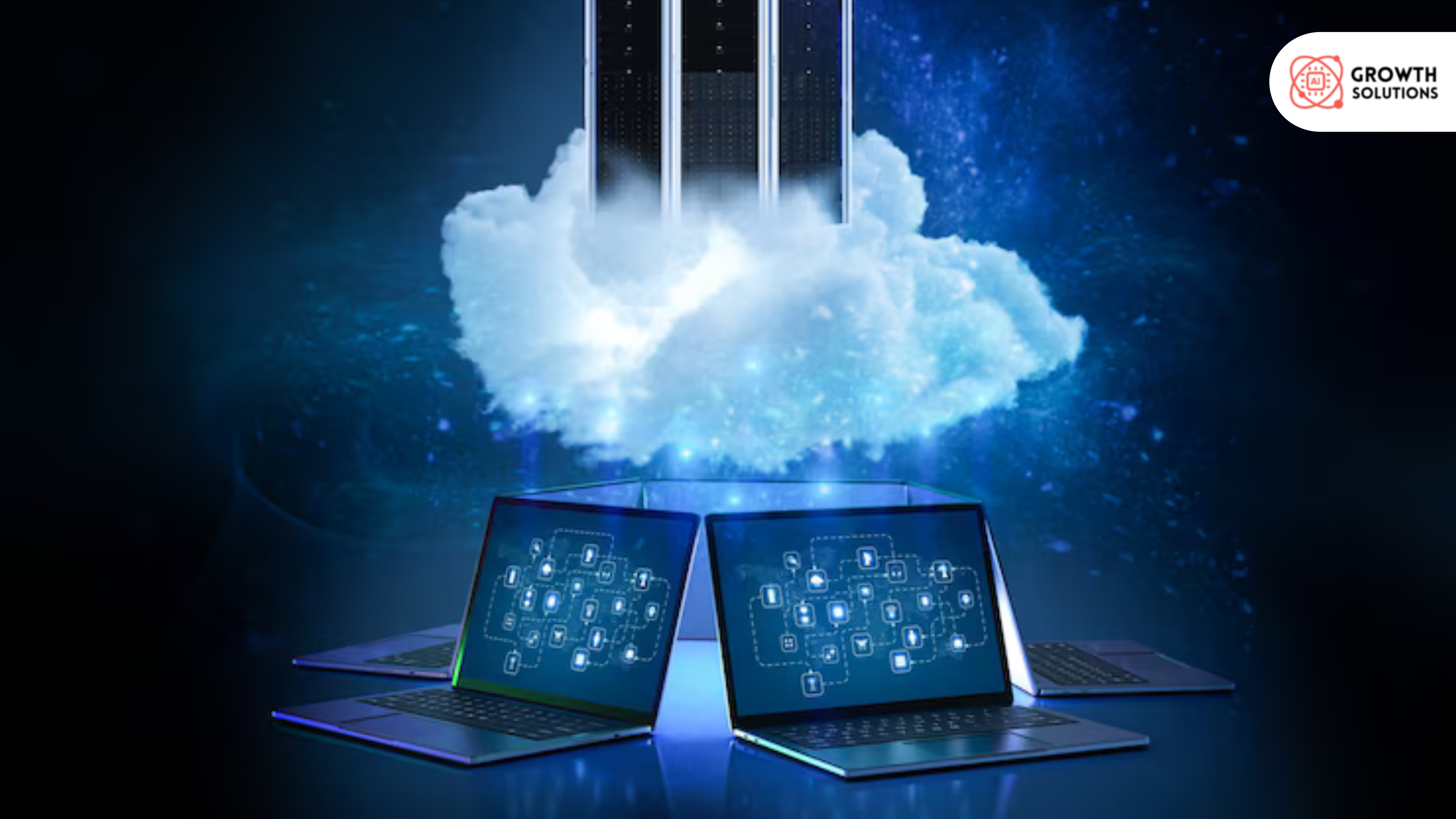18554493114
Call us for any question.
- support@aigrowth-solutions.com
- 349 Blue Point Rd Farmingville, NY 11738,USA
Call us for any question.
18554493114
Search for products
Blog Detail
- Home
- Blog
- Details
What Industries Commonly Use Remote Desktop Services?
In today’s business ecosystem, the need for secure, fast, and centralized digital access has become a non-negotiable requirement across many industries. The evolution of Remote Desktop Services has answered this demand by enabling professionals to connect with their workplace systems from virtually anywhere. Unlike simple remote login tools, RDS provides a full desktop experience hosted on centralized infrastructure, managed and secured by qualified IT Services teams. This shift is not just a convenience—it has become an operational necessity for sectors where data privacy, system uptime, and workforce mobility are critical.
How Remote Desktop Services Operate in Business Environments
Remote desktop environments function through centralized computing models where applications, files, and settings reside on a server rather than on individual machines. Authorized users log in via secure protocols to access these resources in real time. These systems utilize session-based technologies, ensuring that every user experience is isolated yet controlled from a core backend. With managed access, administrators retain full oversight of user actions, software updates, and system usage metrics. This approach minimizes risk, streamlines updates, and supports both full-time staff and contractors who may be working from remote or satellite locations.
Technology Sector and Managed IT Operations
The technology sector is among the earliest adopters of Remote Desktop Services, utilizing them to deliver client support, manage complex networks, and maintain cloud-based software systems. Managed IT Services firms rely on remote desktops to monitor client infrastructures without physical presence, ensuring real-time intervention for critical updates and system failures. Additionally, development teams use RDS environments for collaborative code review, centralized testing, and infrastructure-as-code management, eliminating the need for local dev environments on every device.
Finance and Professional Accounting Firms
In financial institutions and accounting practices, confidentiality and compliance define operational boundaries. Remote Desktop Services play a vital role in enforcing secure access to accounting platforms, auditing software, and sensitive records. These systems ensure that files remain within company-controlled servers, reducing exposure risks even when accessed remotely. Auditors working in the field can pull reports, conduct evaluations, and upload documentation without transporting any physical data. This not only meets regulatory standards but also improves response time and client transparency in financial operations.
Healthcare Systems and Medical Offices
Medical professionals are increasingly turning to centralized digital solutions to manage patient data and administrative workloads. In clinical settings, Remote Desktop Services offer HIPAA-compliant access to electronic medical records (EMRs), imaging systems, and appointment platforms. Physicians on call can securely log into patient dashboards from off-site locations, while support staff can manage billing, prescriptions, and insurance queries without direct access to hospital networks. These layers of secure, remote access enhance care delivery and operational continuity, even during high-risk or emergency scenarios.
Legal Practices and Law Firms
Legal teams require seamless access to documentation, case management systems, and secure communication platforms while maintaining the strict confidentiality of client data. Law firms deploy Remote Desktop Services to ensure that attorneys, paralegals, and clerks can access digital case files, draft motions, and participate in video depositions without being tied to office premises. Centralized data storage paired with session encryption keeps sensitive client information protected even when accessed through public or shared networks. In legal workflows, time-sensitive access to legal research tools and collaborative editing platforms is no longer a luxury but a requirement.
Academic Institutions and E-Learning Providers
Educational platforms, from K–12 to higher education, are leveraging remote desktops to support both educators and students. Instructors can access grading systems, virtual lab environments, and curriculum management portals through Remote Desktop Services, ensuring continuity of teaching regardless of location. Students benefit by engaging with licensed academic software and shared cloud desktops that mimic the classroom experience. For IT administrators within academic institutions, managing software updates and user restrictions becomes more efficient through centralized desktop control, a critical feature when supporting thousands of remote users.
Real Estate and Property Firms
Real estate operations thrive on responsiveness and document control. From contract generation to CRM platforms and property listings, Remote Desktop Services allow brokers and agents to remain productive while on the move. They can securely upload and access property images, legal agreements, and buyer communication histories using authenticated remote sessions. Property managers benefit by having cloud-based access to tenant records, maintenance logs, and payment tracking systems—all without needing in-office workstations. This flexibility supports faster deal closures and enhances client satisfaction in a competitive housing market.
Industrial Manufacturing and Engineering Teams
Manufacturing and engineering environments are no longer confined to plant floors. CAD software, machinery control interfaces, and analytics platforms now run through centralized environments accessible remotely via secure logins. Engineering teams use Remote Desktop Services to collaborate on product design, review simulation results, and adjust manufacturing parameters without needing physical access to the site. Meanwhile, maintenance supervisors monitor production metrics and flag faults via remote interfaces, improving response times and minimizing downtime across production facilities.
Government Departments and Public Sector Agencies
Government organizations are under constant scrutiny to balance transparency, accessibility, and security. From city planning offices to federal regulatory agencies, remote desktops support telecommuting policies while protecting sensitive citizen data. These systems ensure that confidential records, interdepartmental communications, and project management tools are only accessible through secure, logged sessions. By centralizing access and limiting local downloads, agencies reduce exposure to breaches and maintain consistent oversight of digital operations. IT Services within government also gain the advantage of simplified user management and uniform policy enforcement across departments.
Call Centers and Outsourced Support Environments
Remote customer service teams require standardized environments for call handling, CRM access, and analytics tracking. Remote Desktop Services offer call centers a solution by providing agents with virtual desktops that mirror office systems. These platforms include integrated telephony, ticketing tools, and compliance monitoring, which are maintained by centralized support teams. Workforce supervisors can monitor performance, enforce productivity guidelines, and rapidly scale operations without distributing physical hardware. For BPOs managing multilingual or global teams, this ensures consistent service delivery without logistical overhead.
Business Advantages of RDS Across Multiple Industries
Deploying remote desktop environments delivers measurable operational gains across various sectors. Business continuity planning becomes stronger when teams can remain functional regardless of location disruptions. Centralized management also reduces IT overhead by eliminating the need for on-site technical interventions. Enhanced security is a major benefit, with data staying within corporate servers instead of being distributed across employee devices. Cost efficiency rises as companies extend the lifecycle of older endpoints by using them as terminals to access modern, server-powered desktop environments. Scalability is simplified, allowing new users to be on boarded within minutes.
Selecting the Right Remote Desktop Platform for Industry-Specific Needs
Industries differ in compliance needs, software demands, and workforce mobility, so choosing a tailored Remote Desktop Services platform is critical. Decision-makers must assess whether their operations require GPU acceleration, multi-session access, or application virtualization. Integration with in-use platforms like Microsoft 365, SAP, or Salesforce must also be considered. Beyond functionality, licensing models and server infrastructure need to align with budget and IT governance policies. Partnering with experienced IT Services experts ensures that these configurations meet both technical and regulatory standards from the start.
Final Thoughts
The adoption of Remote Desktop Services is no longer isolated to tech-heavy companies. From government agencies to real estate firms, this technology is shaping how professionals engage with their tools, data, and colleagues. It empowers businesses to maintain agility, enforce data governance, and meet the rising expectations of digital-first workflows. For industries where downtime is costly or where compliance is a daily concern, remote desktops are proving to be the backbone of sustainable operations. Choosing the right platform and support partner ensures these benefits are realized fully across the enterprise landscape.
Category
Remote Desktop Services
Previous Post
How Do Remote Desktop Services Support Remote Work and Collaboration?
In the wake of recent global shifts, remote work has become not just a temporary adjustment but a lo...
Next Post
What Are the Key Features of Modern Remote Desktop Solutions?
Remote access technologies have evolved far beyond simple screen mirroring. Businesses today demand ...
Today's businesses span borders, requiring versatile solutions.



 Admin
Admin
